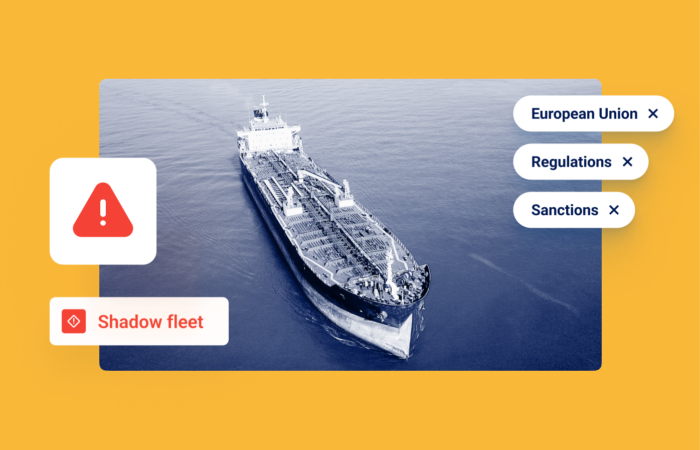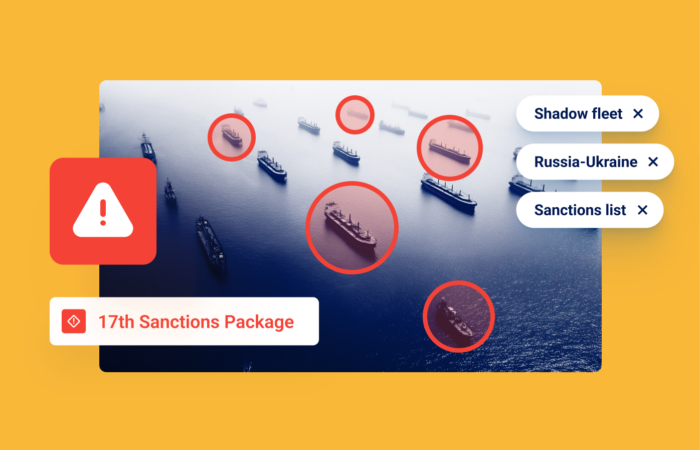Europe’s Shadow Fleet Step Shows What’s Coming…

What’s inside?
The European Union has taken a major step in its ongoing campaign against the shadow fleet – a sprawling network of aging, uninsured, and often sanctioned vessels quietly operating in European waters.
The European Commission amended the Vessel Monitoring Directive to require all vessels passing through EU waters – even those not calling at an EU port – to provide proof of insurance. As noted in this blog post’s title, this move is likely indicative of what’s to come…
The Rationale
“This is a targeted measure with potentially great impact, enhancing the preparedness of the EU’s coastal states,” said Magda Kopczyńska, Director-General for Mobility and Transport.
The rationale behind the move is clear: the shadow fleet presents mounting sanctions, safety, and environmental risks to European nations. S&P Global Market Intelligence found that more than 800 sanctioned ships currently lack confirmed insurance and the average sanctioned vessel is 21 years old – roughly eight years older than the global average.
Aging, uninsured vessels dramatically increase the chances of catastrophic incidents, from oil spills, to subsea cable damage. We’ve seen several near-disasters linked to the shadow fleet over the past year, prompting countries across Europe to step up enforcement operations: from Denmark’s inspections at Skagen to the UK-led Nordic Warden naval monitoring initiative.
This is a MASSIVE Problem
Windward’s Maritime AI™ platform provides a stark view of the challenge ahead.
In just 180 days, Windward identified:
- 1,682 gray and dark fleet tankers operating within EU waters
- 36,858 port visits involving these risky vessels
The gray and dark fleets are everywhere – from the Baltic Sea (7.2k visits), to the Mediterranean (7.7k) and Atlantic corridors. This is not a human-scale problem, you need models, data, and algorithms to narrow it down.

These vessels aren’t just operating on the margins, they are deeply woven into the fabric of maritime activity across the region. And many are uninsured, engage in identity manipulation (like flag hopping or false registrations), or conduct other deceptive shipping practices (DSPs), such as AIS signal tampering, GNSS manipulation, and suspicious ship-to-ship transfers.
An Operational Burden
This regulation doesn’t just impact enforcement authorities, it also reshapes the environment for shipowners and operators.
With tens of thousands of voyages across EU waters each month, the expectation to provide proof of insurance for every vessel, even those merely passing through, creates a major operational burden. Paperwork that was once needed only for port entry must now be ready at all times. Without access to real-time insurance verification and automated compliance tools, shipowners could find themselves mired in bureaucracy – or worse, facing costly delays, vessel detentions, or penalties.
The New Proof-of-Insurance Rule: A Step Forward, But Not Enough
Requiring vessels to provide insurance paperwork is a critical first step, but a highly challenging one, given the volume of vessels, each conducting multiple visits. Enforcement isn’t just about paperwork. It’s about really knowing who you’re dealing with and making smart, risk-informed decisions in real time. Uninsured vessels, or those that disregard such requirements, are more likely to also flout other safety and compliance measures. They are also often:
- Linked to sanctioned countries
- Switching flags to obscure ownership or evade scrutiny
- Masking their location or identity via AIS manipulation
- High-risk ship-to-ship transfers happening out of sight
Without a platform that reveals these hidden behaviors, authorities could be left chasing noise — inspecting the wrong vessels while true risks slip through.
Turning Regulation Into Control with Windward
This is where Windward’s technology becomes critical. Government agencies and coastal authorities need proactive, data-driven visibility. Shipowners require efficient, scalable ways to manage their growing compliance obligations. Windward delivers:
- Real-time risk assessments of vessels based on ownership, activity, and compliance history
- P&I insurance verification integrated into vessel profiles, reducing the operational burden on both authorities and shipowners
- MAI Expert™, Windward’s Gen AI agent, automatically highlights vessels with potential sanctions risks, lack of insurance, identity issues, and high-risk behaviors
Governments can prioritize enforcement, while shipowners and operators can proactively demonstrate compliance – avoiding unnecessary inspections, delays, and penalties. Windward empowers government agencies with the tools they need to:
- Identify the shadow fleet operating in their waters
- Enforce sanctions and maritime safety regulations effectively
- Protect national waters and critical infrastructure from real threats
As Europe tightens the net and more such steps can be expected, Windward can ensure you know exactly which vessels to watch and exactly what action to proactively take.











